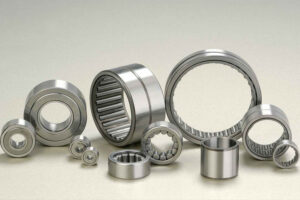Demystifying Bearing Classification: A Comprehensive Guide

It is a crucial aspect of understanding the diverse range of bearings available in the market. Whether you’re a mechanical engineer, a technician, or simply an enthusiast, having a solid grasp of bearing classification can greatly enhance your knowledge and decision-making when it comes to selecting the right bearing for a particular application. In this article, we will delve into the intricacies of bearing classification, exploring different types and their unique characteristics.
1. Deep Groove Ball Bearings:
Deep groove ball bearings are the most common and widely used type of bearings. They consist of an inner and outer ring with a set of balls between them, enabling smooth rotation with minimal friction. These bearings are ideal for lighter loads and moderate speeds, making them suitable for a wide range of applications, including electric motors, automotive components, and household appliances.
2. Angular Contact Ball Bearings:
Angular contact ball bearings are designed to handle both radial and axial loads and are commonly used in applications involving high-speed rotation and heavy machinery. With their ability to accommodate thrust loads in conjunction with radial loads, these bearings are widely utilized in industries such as machine tools, pumps, and gearboxes.
3. Cylindrical Roller Bearings:
Cylindrical roller bearings feature cylindrical rollers as the rolling elements, providing high radial load capacity and moderate thrust load capacity. Their design allows for easy assembly and disassembly, making them well-suited for applications like electric motors, gearboxes, and industrial machinery.
4. Tapered Roller Bearings:
Tapered roller bearings are specifically designed to accommodate both radial and axial loads. These bearings have conical rollers and raceways, enabling them to handle heavy loads at high speeds. Tapered roller bearings find applications in automotive transmissions, heavy machinery, and railroad equipment.
5. Spherical Roller Bearings:
Spherical roller bearings are designed to handle heavy radial loads and misalignment. With a barrel-shaped rolling element, these bearings are highly durable and find application in industries such as mining, construction, and paper mills where heavy loads and harsh operating conditions are prevalent.
6. Thrust Ball Bearings:
Thrust ball bearings are designed to accommodate axial loads in a single direction. They consist of a shaft washer, housing washer, and a set of balls. These bearings are commonly used in automotive, aerospace, and marine applications, where axial loads need to be efficiently managed.
7. Needle Roller Bearings:
Needle roller bearings are characterized by their cylindrical-shaped rollers with a higher length-to-diameter ratio. These bearings are commonly used where space is limited, such as in automotive transmissions, motorcycles, and industrial machinery.
Bearing Classification Conclusion:
Understanding the classification of bearings is crucial for making informed decisions when it comes to selecting the most suitable bearing for specific applications. Whether it’s deep groove ball bearings for general-purpose use or specialized bearings like thrust ball bearings for axial load management, each type has its unique strengths and limitations. By familiarizing yourself with the various bearing classifications outlined in this article, you will be equipped to make smart choices that optimize performance, reliability, and longevity in your engineering endeavors.






